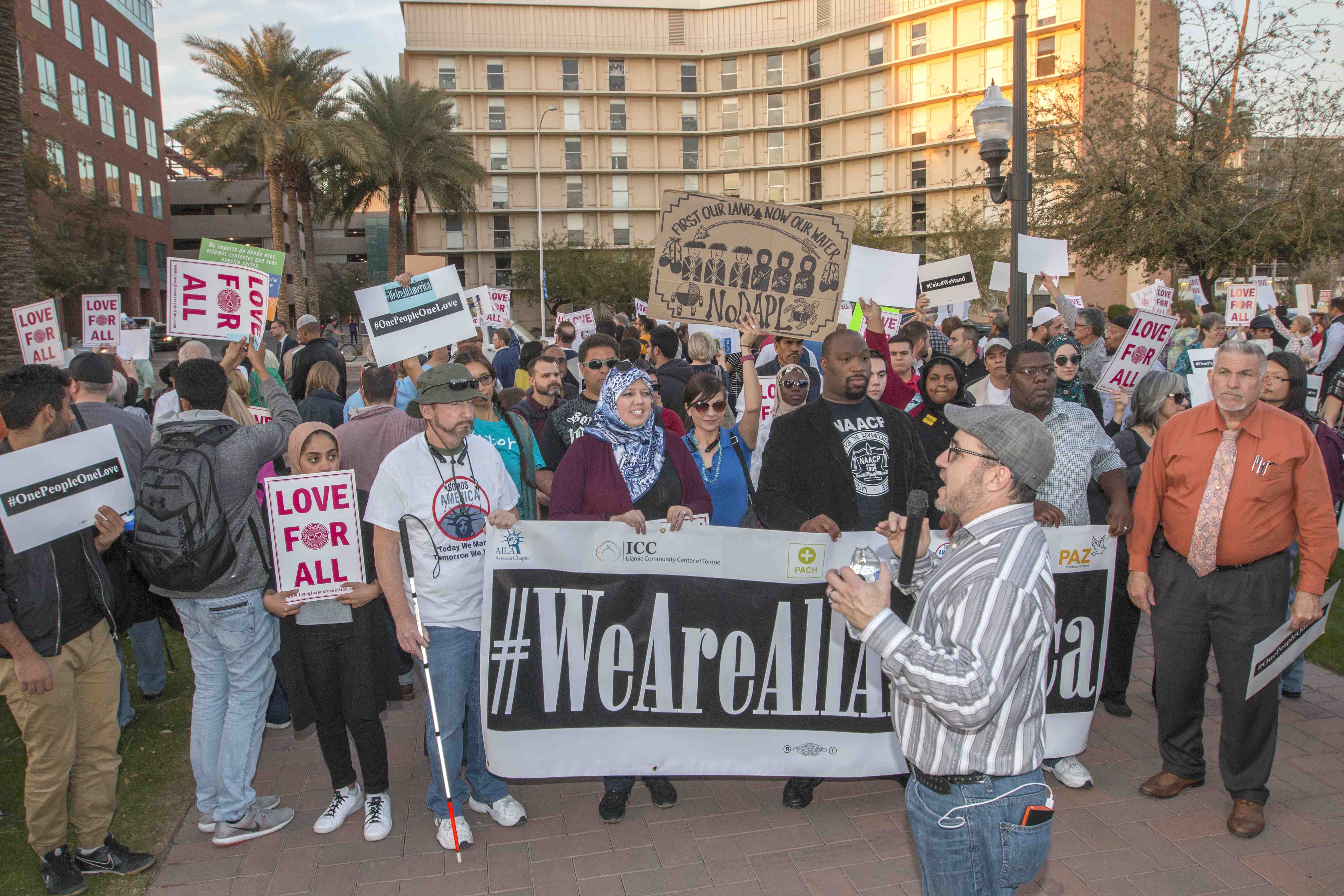
I constantly hear from Muslims, especially Muslim women, that they are scared to go out these days because they fear being attacked or ridiculed.
While that does happen, it is not the norm.
Everywhere I go, people are coming up to me to say ‘hi’ or tell me how welcome I am here.
Considering I was born in the U.S., have always lived here, and it has never crossed my mind that this is not my country, it is sometimes an odd experience for me for my fellow citizens to give such assurances.
But they mean well. They know the rhetoric of division and hate is having an impact on those perceived as ‘others‘ – not just Muslims.
People are becoming more and more aware of the way ‘others’ are being targeted and sidelined as ‘not one of us’ – not for their own actions but because they fit a false stereotype.
When a group of us (scarf-wearing Muslims) attended the Women’s March in Phoenix, so many people came up to us and thanked us for joining them.
A few times it was all I could do not to respond with “Why would you think we wouldn’t?” or “No, thank you for joining us.”
Most people don’t see Muslims in their lives in the U.S. Many probably think it is because we are hiding because of fear.
Some are.
But the reality is it’s often difficult to know when you even see a Muslim.
Muslims are only 1% of the entire U.S. population.
To put that into perspective:
- 3.8 percent of Americans identify as gay/lesbian, bisexual, or transgender
- African Americans are over 13%
- Hispanic/Latino Americans are 17%
The chances of running into a Muslim in the US is statistically small.
To complicate matters more, Muslims span every ethnicity, including both people who converted to Islam and people who can trace their Muslim heritage back generations – so just picking out a Muslim by ‘looks’ is not always possible.
Though people think of Muslims as Arab, Arabs are less than 20% of the entire world’s Muslim population – 50% of the U.S. Arab population are Christian.
Most people couldn’t pick out a Muslim in a lineup.
Though some Muslims dress in a traditional dress of their region or country, most Muslims wear western clothing. That includes Muslims living in or from ‘non-western’ countries.
And not all Muslim women wear the headscarf, even in most majority Muslim countries.
Between statistics and characteristics, Muslims are simply unseen by most people.
February 1st was World Hijab Day. An annual event that has been celebrated worldwide for the last five years.
It is meant to bring awareness to women who choose to wear the scarf so that they are free to do so without fear of being attacked.
The morning ritual of getting dressed should never include concern that clothing choices could cause a woman to be harassed.
This year, Arizona Representative Tony Navarrete (Dist. 30) announced World Hijab Day on the Arizona House floor – making it a part of Arizona recorded history.
The group of us who attended, both Muslims and supporters of World Hijab Day, were honored and grateful for Rep. Navarrete’s inclusion and support.
The point is, more people are kind and curious than hateful and mean. People want to know Muslims, and not just Muslims but all groups feeling like ‘others’ lately. It is up to us to give them those opportunities. There are less of us than of them, so the ball really is in our court to embrace them.
There are less of us than of them, so the ball really is in our court to embrace the opportunities – even to create them.
I promise, most people are eagerly waiting for the chance.